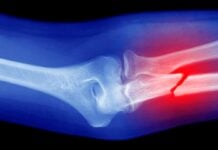A chance discovery in the sand by a young boy growing up near Sydney has culminated in a finding that re-orients our understanding of insect evolution. Robert Beattie, a retired Australian teacher and lifelong fossil enthusiast, unearthed what turned out to be over 150 million-year-old fossilized insects at Talbragar, a site in New South Wales’s central tablelands.
This discovery, painstakingly cataloged and ultimately identified as a new species of non-biting midge, is the oldest specimen of its kind found in the Southern Hemisphere. The finding challenges prevailing theories about the evolution of these insects, which previously suggested they originated in the northern hemisphere on the ancient supercontinent Laurasia.
Beattie’s passion for fossils began in 1948 when he was a child and discovered a Permian shell during a family holiday in Gerringong. This sparked a lifelong fascination that saw him delve into fossil hunting across Australia’s eastern states, sharing his finds with the Australian Museum since his late teens.
After retiring from teaching at age 59, Beattie dedicated himself full-time to paleontology, presenting his Talbragar discoveries at a conference in Edinburgh in 2016. His presentation caught the eye of Dr. Viktor Baranov, a Spanish-based paleontologist who recognized the significance of the tiny specimens.
Baranov’s visit to the Australian Museum in early 2020 confirmed the fossils were approximately 151 million years old and belonged to the Podonominae subfamily of midges – insects that feed on nectar rather than blood. This group is still widespread globally, with around 80% of its biodiversity found in the Southern Hemisphere today.
“The geographical bias in fossil research has skewed our understanding of evolutionary origins,” explains Dr. Matthew McCurry, a co-author of the study published in Gondwana Research. “Northern hemisphere finds are heavily favored, influencing which regions get more paleontological exploration and funding.”
He continues: “This midge is an example that when we look south, there are remarkable fossils to be found that reshape what we thought we knew.”
The team formally named the new species Telmatomyia talbragarica, meaning “fly from the stagnant waters” – a fitting description given the fossil site appears to have been a type of mud pond.
At 82, Beattie shows no signs of slowing down. He remains an active research associate at the Australian Museum, with another field trip already planned for Penrose in New South Wales’s southern highlands next month. This remarkable discovery underlines the enduring power of curiosity and dedication: often hidden within unexpected corners of our past lie profound insights waiting to be unearthed.





























